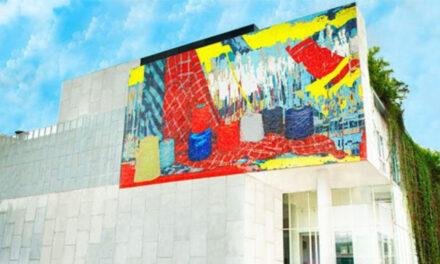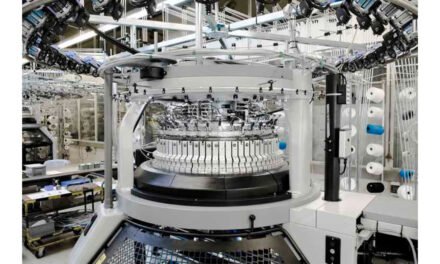 The Lenzing Group, the world’s leading supplier of wood-based specialty fibres, released its Sustainability Report 2021, April 05, 2022, on the occasion of “Earth Month”. Bearing the title “Linear to Circular”, the report emphasizes the company’s focus on carefully balancing its needs with those of nature in the spirit of the circular economy. The report has been prepared in accordance with the standards of the Global Reporting Initiative (GRI) and the Austrian Sustainability and Diversity Improvement Act (NaDiVeG) and audited by KPMG Austria GmbH Wirtschaftsprüfungs- und Steuerberatungsgesellschaft.
The Lenzing Group, the world’s leading supplier of wood-based specialty fibres, released its Sustainability Report 2021, April 05, 2022, on the occasion of “Earth Month”. Bearing the title “Linear to Circular”, the report emphasizes the company’s focus on carefully balancing its needs with those of nature in the spirit of the circular economy. The report has been prepared in accordance with the standards of the Global Reporting Initiative (GRI) and the Austrian Sustainability and Diversity Improvement Act (NaDiVeG) and audited by KPMG Austria GmbH Wirtschaftsprüfungs- und Steuerberatungsgesellschaft.
“Our innovations in relation to the circular economy and biodegradability stem from a deep sense of responsibility to our planet and a desire to act in ways that future generations can be proud of. We hope that you will discover and share this sense of responsibility when you read the Lenzing Sustainability Report 2021,” notes Robert van de Kerkhof, Member of the Managing Board of Lenzing Group.
Aiming for a carbon-neutral future: With the implementation of the two key projects in Brazil and Thailand, as well as with the investments at the existing Asian sites in China and Indonesia amounting to 200 mn euro, Lenzing continues to march purposefully towards Group-wide climate neutrality. In 2019, Lenzing became the first fibre manufacturer to set a target to reduce its carbon emissions by 50 percent by 2030 and to be net-zero by 2050. This carbon reduction target has been verified and approved by the Science Based Targets Initiative. The partnership with Swedish pulp producer Södra marks a further milestone in Lenzing’s efforts to realize its ambitious climate and sustainability goals. These two global market leaders, which have been proactively promoting the circular economy in the fashion industry for many years, are joining forces to give the issue a further boost and to make a decisive contribution to resolving the global textile waste problem. An expansion of capacities for pulp recovery from waste textiles is also planned. The goal is to be able to recycle 25,000 tonnes of used textiles per year by 2025.
Sustainability is not only a very important element of strategy at Lenzing, but also a guiding principle for innovation and product development. Lenzing continued to expand its product offering for the textile and nonwovens sectors in 2021. The third quarter saw the presentation of the first TENCEL™ lyocell fibres made from wood- and orange-based fibre pulp. The upcycling of orange peels as part of the TENCEL™ Limited Edition initiative represents a further successful step by Lenzing to develop new closed loop solutions together with partners along the value chain. The introduction of the first carbon-neutral fibres on the global nonwovens market under the VEOCEL™ brand comprises a further product innovation from the reporting year that exemplifies Lenzing’s ambitious path in climate protection.
Solution to plastic pollution: With its wood-based, biodegradable VEOCEL™ fibres, Lenzing’s nonwoven business also benefits from new regulations such as the Single-Use Plastics Directive (EU) 2019/904.1 The EU Commission published its implementation guidelines in the second quarter, specifying which products fall within the directive’s scope. Lenzing welcomes the measures taken by the EU in the joint fight by member states against plastic waste pollution.
In a study published in October 2021,2 scientists from the renowned academic research institute Scripps Institution of Oceanography (SIO) at the University of California, San Diego, confirmed that wood-based cellulosic fibres biodegrade in the ocean within a short time frame at the end of their life cycle, making them a significantly better alternative to fossil-based synthetic fibres.
Honored as global “sustainability champion”: Lenzing received several awards worldwide in 2021 for its achievements, especially in the sustainability area: Lenzing was one of only 14 companies worldwide to receive a “AAA” rating from global non-profit environmental organization CDP for its environmental leadership in climate change, water security and forest conservation. CDP is recognized as the gold standard of environmental reporting worldwide.
Renowned rating agency MSCI upgraded Lenzing’s rating from “A” to “AA”. Lenzing thereby ranks among the top six percent of companies evaluated in its peer group. This improved MSCI ESG rating also leads to a reduction in interest expenses for Lenzing. Lenzing placed a bonded loan of 500 mn euro in November 2019, which is linked to its own sustainability performance.
In the EcoVadis CSR rating, Lenzing achieved platinum status for the first time in 2021, ranking it among the top one percent of companies evaluated worldwide in terms of the environment, fair working conditions and human rights, as well as ethics and sustainable procurement.
Online Sustainability Report 2021: “Linear to Circular”: Lenzing is also taking new, innovative paths in terms of its non-financial reporting. It will offer its sustainability report in digital form from 2022. “We have set ourselves the goal of also reflecting Lenzing’s high level of innovation in terms of its communications, and we are breaking new and innovative ground in this area. This year, we are pleased to be able to present our reports in digital and thereby interactive form for the first time. This not only makes our reporting more user-friendly, but also takes place exactly where the majority of our users are – online,” comments Dominic Köfner, Vice President Corporate Communications & Public Affairs. The Lenzing Sustainability Report 2021 is available at the following link: https://reports.lenzing.com/sustainability-report/2021.
Materiality analysis 2021: The content of the Sustainability Report 2021 is based on results of the new materiality analysis. The regular update is an integral part of Lenzing’s sustainability strategy “Naturally Positive”. In 2021, the materiality analysis was updated and expanded. For the first time, a so-called double materiality analysis was carried out. It was developed in three phases and, in contrast to the 2015 version, produced new material aspects such as biodiversity and ecosystems, health and safety, and digitalization and cyber security. Find out more about this in the focus paper “Materiality analysis”.





















